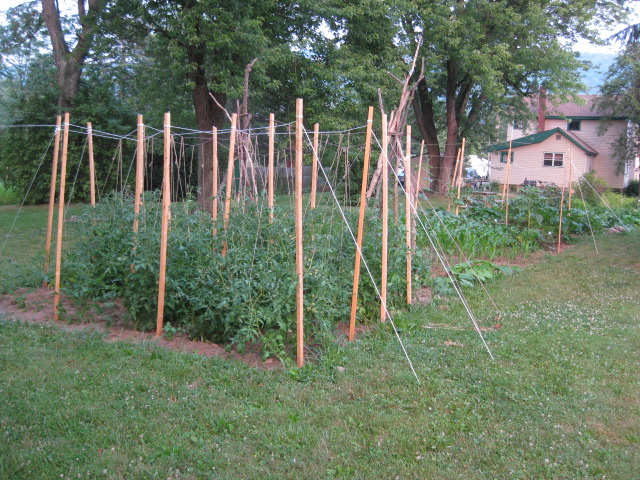-

Erin Donahue -

Christina Barkanic -

Brittany Trott -

Emily Wiley -

Jessica Reilley -

Chris Raines -

Will Nichols -

Emily Reddy -

Michele Marchetti -

Michele Frank -

James Gherardi -

Kit Henshaw -

Christina and Erin -

Kim Tait -

Erin McKinney -

Steve Spanelli -

Sam Komlenic -

Katherine Taylor Grofic -

James Eisenstein -

Jamie Oberdick -

Anna Lombardo -

LacCreta Holland -

Tony Ricci -

Local Food Journey -

Laura Young -

Kristin Camplese -

Harrison's Fresh + Local -

Danielle Matalonis -

Kristine A. -

Linda Weaver -

Naomi Elle Schwartz -

Dana Stuchul -

Cara McShane -

Brittany Smith -

Jessica Illuzzi - Frosty
-

Jessica Paholsky -

James Sechrengost -

Brad Yeckley -

Maya Althouse -

Jordan Reabold -

Kim Chase -

Maria Bryant - Alexandrea Scott
Water your garden the right way during next dry spell
Posted by Jamie Oberdick on 06/26, 2013 at 01:57 PM

Despite last night’s deluge that soaked many a garden and farm around the area and a forecast for a lot more rain, summer almost always has at least a few dry spells. Those are the days when the sun bakes the soil to a crispy golden brown dry, and your plants sometimes do things in desperate self-defense, like curl up leaves in the case of corn. You really have no other alternative but to give your plants the life that only good old water can give them.
To water successfully, you actually have to put some thinking into it. First off, you know how on garden commercials for the big box stores such as Lowes, Home Depot, etc. they show a smiling homeowner waving a water wand hose attachment back and forth with a big ol’ smile on his or her face? Um, that’s not watering. That’s encouraging disease and poor root growth (more on that in a bit). So, ignore that.
To water properly, here are some tips:
Go deep: As a general rule, slow, extended watering is best. If you water via spraying a hose over a plant for a short time, while the soil will look wet, that is deceiving. If you check the soil, you will discover that the soil is only wet on the surface, not down deeper where the plant needs the soil. This type of watering also encourages shallow, unhealthy root growth and in the case of tomatoes can encourage a disease called blossom end rot. If you have an irrigation hose, that’s ideal but if not, it’s better to take the sprayer off the hose and put the end at the plant’s base and let it soak in.
Avoid wetting the leaves whenever possible: The reason for this is to avoid plant diseases, especially fungal diseases like blights or powdery mildew. It’s best to focus on getting the roots watered and not hitting the leaves. This also means that sprinklers are not a preferred method of watering vegetable or flower gardens. Yes, rain wets the leaves but why up the risk by wetting the leaves yourself?
Water when the sun is low: The overall best time to water is the morning. This is because you won’t lose much to evaporation, and also will give the sun an opportunity to dry off any leaves you may inadvertently get wet. The next best time is evening, although you run the risk of introducing plant diseases (see the bullet above).
Try a rain barrel: Having a rain barrel or two is great and saves you money on water bills. Do some research online; while you can buy rain barrels, they are quite easy to make.
Try some different methods: Irrigation or soaker hoses allow you to water your garden without even being there and will do the job slowly and more evenly. You can structure your garden for watering by having raised rows with little ditches in between. I do this and water by setting a hose at the end of the row and letting the water flow down in between the rows, soaking the plants on either side.
![]() Author: Jamie Oberdick
Author: Jamie Oberdick
Bio: Editor, Local Food Journey | Passionate about supporting local food in Central PA
- Our Local Food Journey comes to an end
- Winter isn’t a quiet time at the farm
- Get the taste of garden season right now by growing herbs indoors
- All you need to know about PASA’s Farming for the Future conference









NO COMMENTS